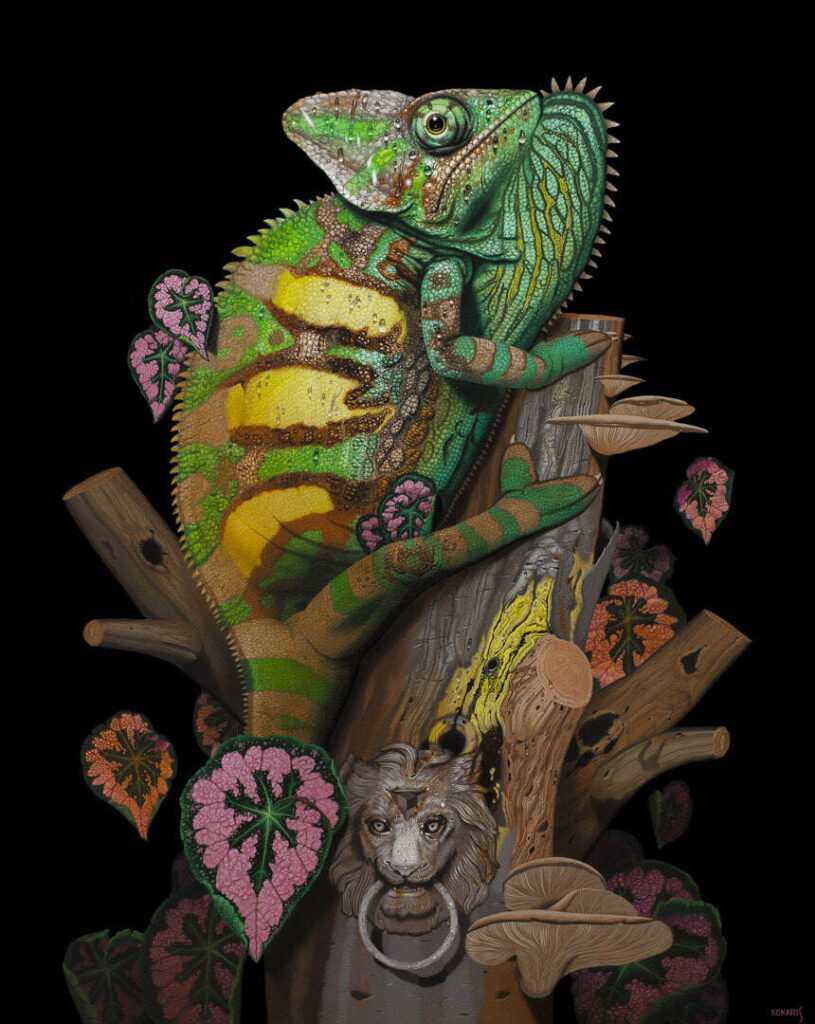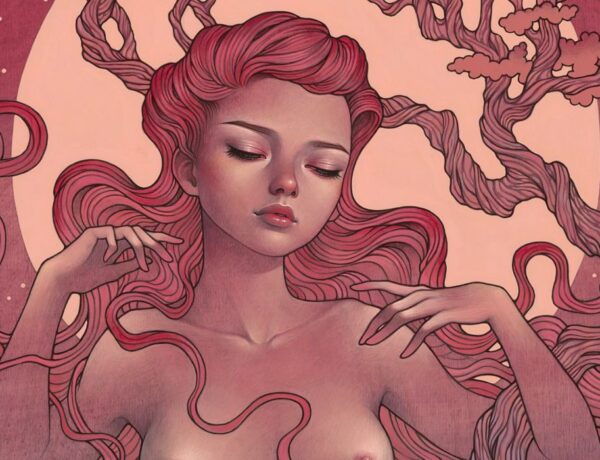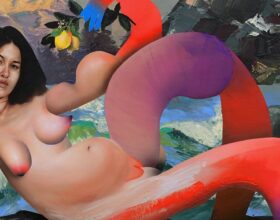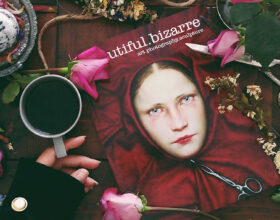The Quick Q & A editorial in Beautiful Bizarre Magazine is a much loved regular feature, in which we ask 6 artists the same 4 questions. In the June 2021 Issue 33, these were the Quick Q & A questions:
- If you could collaborate with any artists, living or dead, who would you pick, and why?
- How can galleries and artists ensure minorities are equally represented?
- How do you ensure your voice stays true to your narrative without being subconsciously influence by others?
- Which do you think is more important: for art to provide escapism or for art to be a commentary on current events?
We feel that the artists’ responses provide such a valuable insight for our community of artists that we wanted to share one Quick Q & A response from each issue with you, going forward. The June 2021 Issue 33 print issue is sold out, but you can download the digital magazine via our webstore to read more. To ensure you never miss an issue again, you can also subscribe to Beautiful Bizarre Magazine, and have each issue sent straight to your door each quarter.
Excerpt from Issue 33 // June 2021 Quick Q & A editorial: Artists Susan McDonnell [2nd Prize Winner of the 2020 Beautiful Bizarre Art Prize, Traditional Art Award], Max Sansing, Christina Mrozik, Adam Matano [3rd Prize Winner of the 2019 Beautiful Bizarre Art Prize, Sculpture Award], Amahi Mori, and Kane Kokaris respond to the below Quick Q & A:
How can galleries and artists ensure minorities are equally represented?
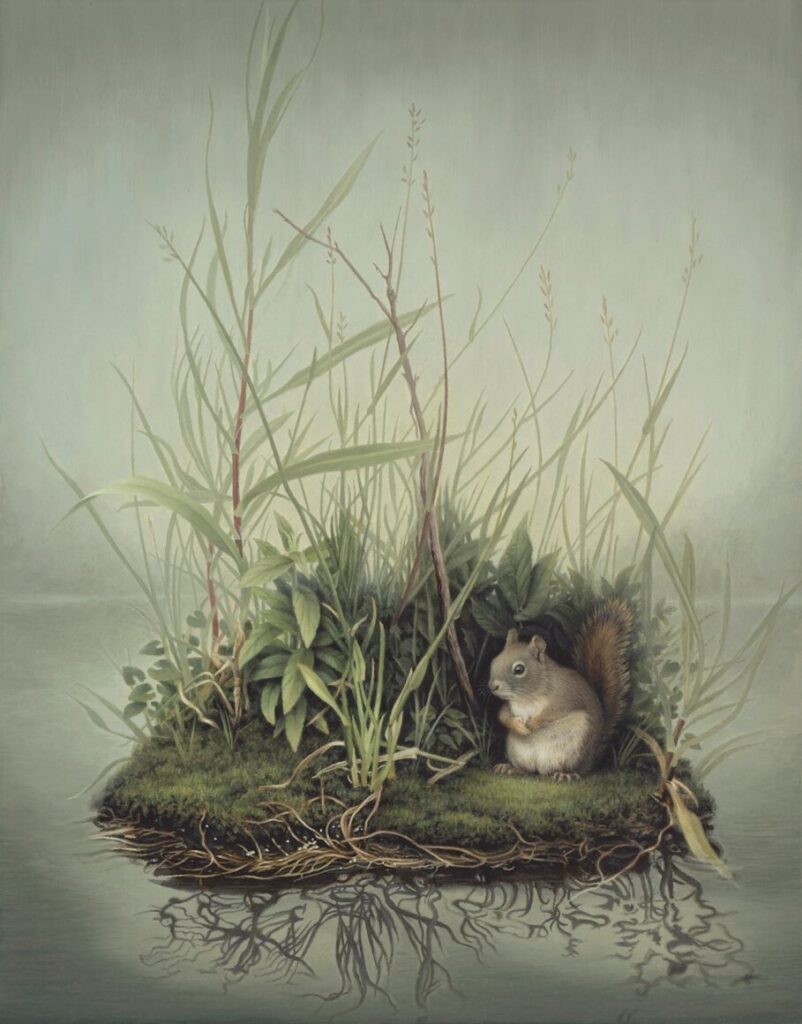
“Galleries can invite underrepresented artists to curate or co-curate shows. This offers an opening for artists from diverse backgrounds to be represented in a way that creates meaningful conversations about identity and experience. Galleries can often be intimidating to visit. It is important that marginalised groups are equally represented, and that the audience also represents the diversity of society. The first step in welcoming this audience is the inclusive nature of the art on the walls. Artists can read books, listen to voices, and look at artwork that expands and enriches their under- standing and appreciation of marginalised artists. Showing up and supporting art shows and events highlighting artists of diverse identities can further create an art community of inclusion.”
“Honestly, by just widening their focus. Sometimes the spaces that galleries look for talent or artists within their taste are places that many artists of colour aren’t at or don’t have access to. There’s been many times that I’ve been one of the one or two black people in an art event and it’s not like there’s a lack of us. There’s just a feeling I get sometimes that if a few of us are there, then they’ve met their black artist quota. I have faith that if they truly stick to the merit of the work and truly seek out what’s good, then the representation will improve.”
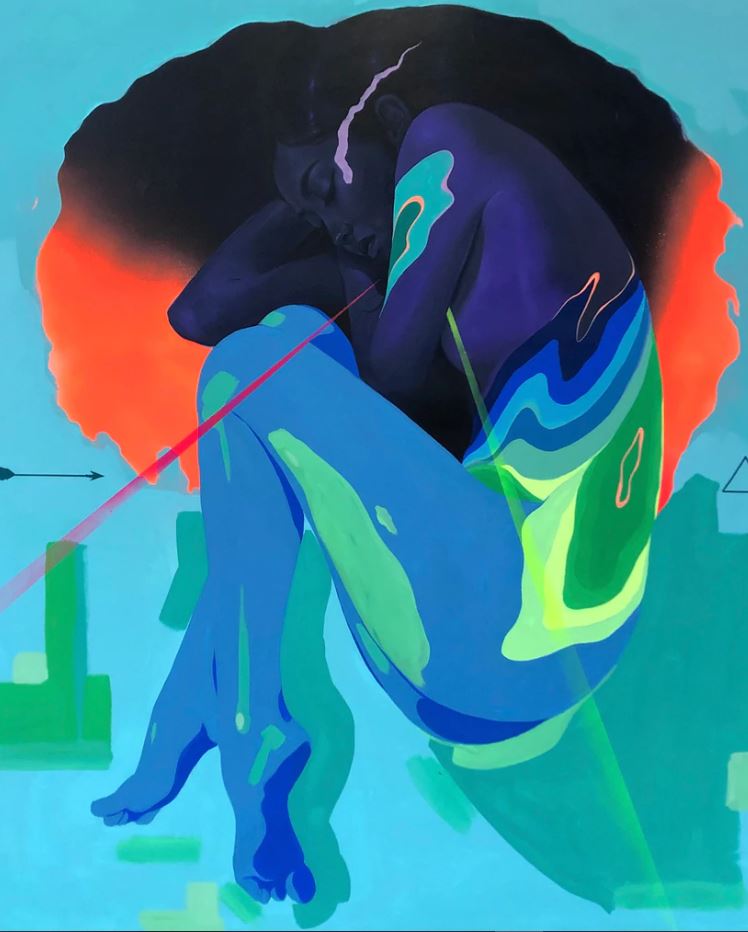

“It would help to realise that markets are never neutral. People and organisations in a position of power – whether monetary, social, etc. – have the option of acting in ways that either prop up and perpetuate the status quo (cis, white, classist, ableist), or they can endeavour to sustainably rearrange, integrate and promote a more equal society. There isn’t a neutral option. Art is a system built on subjective judgement. I think sometimes artists and galleries treat subjectivity as neutrality (i.e. fairness). I would challenge us to look closely at the ways that subjectivity has been used in our systems of value and inclusion. We need to ask: at what point does the line of subjectivity limit marginalised voices?”
“I believe the arts should have a more substantial role in our educational system, starting at a young age. Unfortunately in the United States they are often the first programs to be cut. It’s pretty clear that one of the most outstanding things about humans is our creativity and abstract thinking. Even if students don’t end up pursuing a career in the arts, that free thinking leads to a better understanding of the world, which will help to make our world a better place. Another factor is collectors. Collectors play a big role in the arts. They can influence who is represented in galleries based on the art that they choose to buy, so if the collectors select more works created by minorities the galleries will be led to increase their representation.”

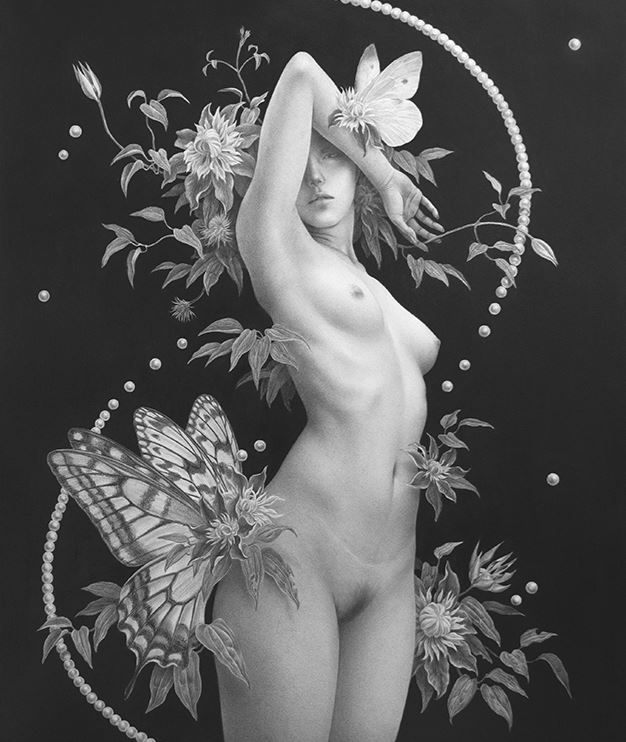
“This is a question that all people should consider, not just galleries and artists. The fact that discrimination against minority groups still exists is very sad. One of the causes may be the old social structures, or older generations’ way of thinking. Maybe that discriminatory consciousness has diminished compared to the past, but we should continue striving to remove the barriers holding back minorities. Art has the power to overturn the old ways of thinking. All art and artists have the power to play a role in that. I think that the voices of minority groups need to be heard. Galleries must be structured to accept those voices to make the world better, with an equal attitude toward all artists.”
“I think galleries and artists must actively seek and engage with minority groups to help expose them further. They may not have the same variety of access to spaces and audiences as others. Open conversation is a great start. Inclusion in group shows in galleries should be a regular occurrence, with the addition of themed group shows for particular minorities. Working with them on show themes so their art can be viewed in context is important. Information included in minority-centric group shows might address history and values/aesthetics so that the perspective and understanding of mainstream audiences can be broadened. As societies diversify, so too should art representation. We should all strive to expand narrow views and work towards inclusivity, in the art world and beyond.”
